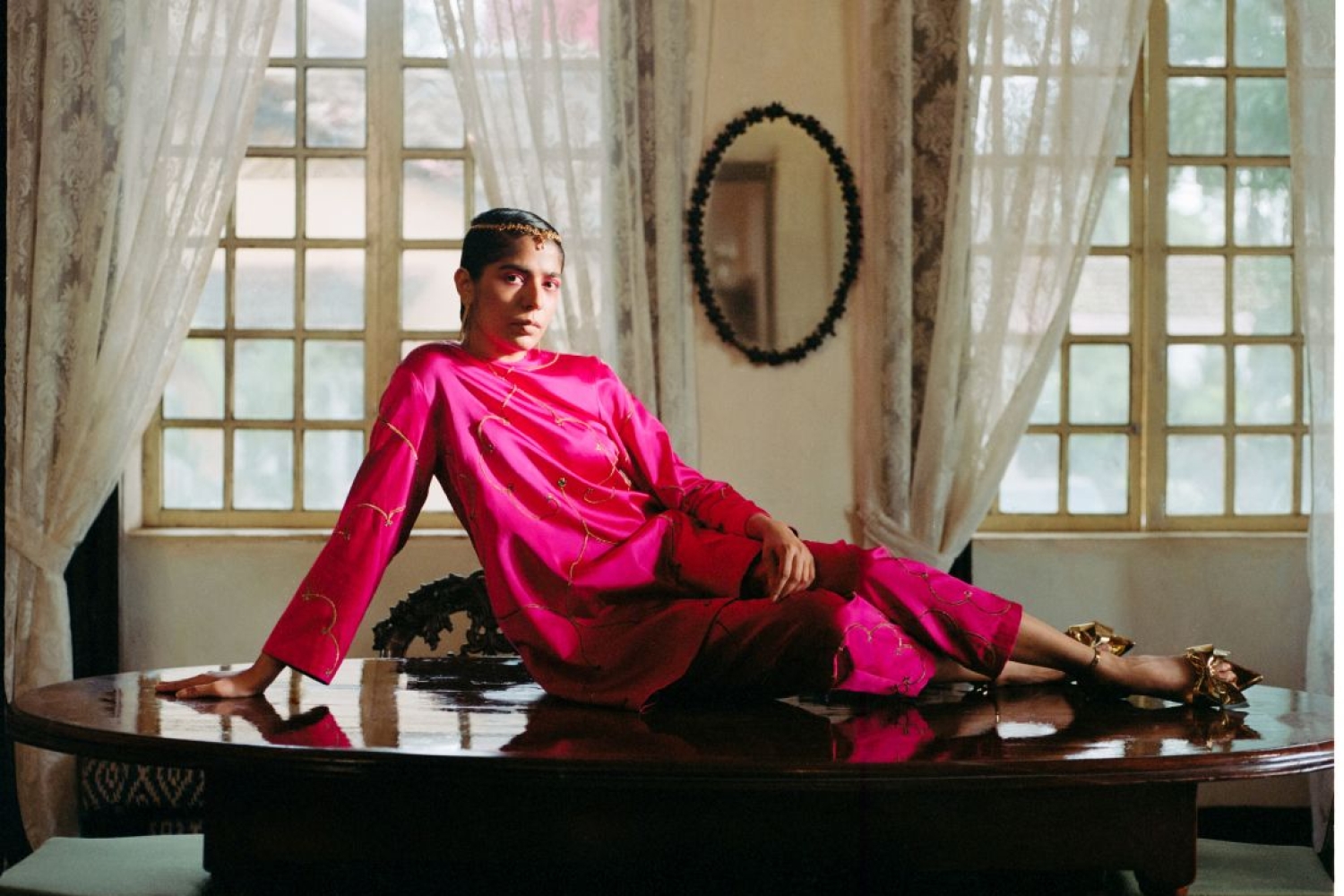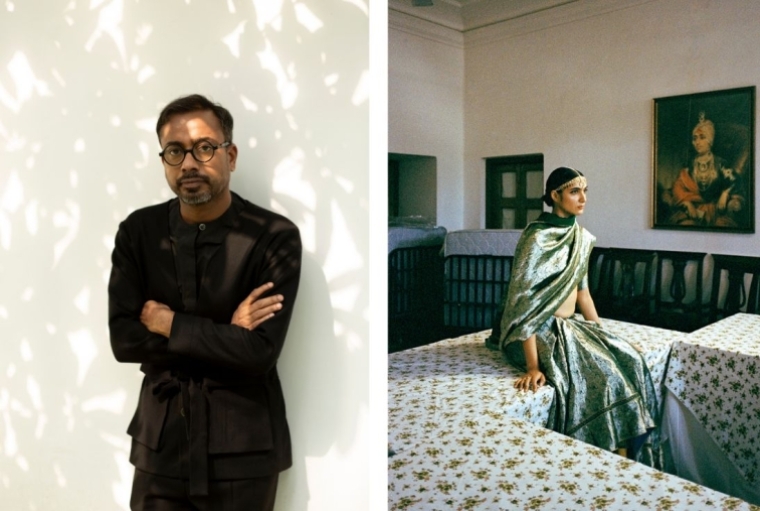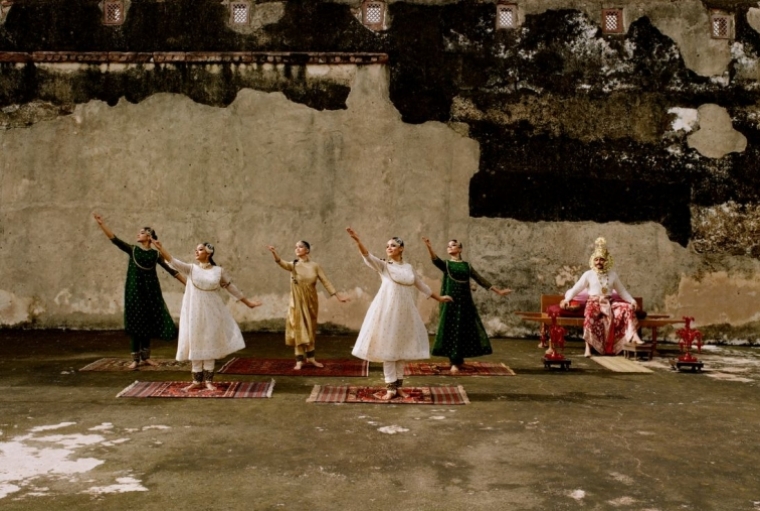

Fifteen years ago, when Sanjay Garg established the clothing brand of Raw Mango, he was driven with the belief of making a dent by celebrating something very common and everyday to the people of India: sarees.
Garg did not see himself as a part of the elite space of fashion and instead carved out his niche on the periphery. Today, Raw Mango has earned a place in the center by celebrating India and its aesthetics, shifting the cul- tural narrative around Indian craftsmanship. A simple look at the social media profile of Raw Mango reminds you of what it means to be Indian, connecting you with its roots through not just fashion but also art, music, culture, architecture, and craft.
Their new collection, Sooti, embraces cotton sarees on the brand’s longstanding friend, filmmaker Kiran Rao. Rao playfully models the cotton sarees, expressing her innate goofiness and the journey that has led her to become who she is today—giving a sense of non-conforming authenticity that is crucial to the brand.
When I visited their new studio in Gurgaon to talk to him, it was hard not to observe his intricate passion of art through the workspace. Everything from the benches and lawn to huge antique pots and paintings were either designed or curated by Garg himself. From tailors to designers, cupboards full of Indian books to the mood board of their next collection—everything under one roof exemplified the enigmatic process of Raw Mango’s creations from ideation to finish. Garg lets us in on what defines his vision and journey.
Raw Mango has completed fifteen years, how do you think the brand has evolved in this long journey? Where did you see it first and how has it turned out to be today?
I didn’t think of any scale or size in terms of the brand. I only thought about the impact of the brand. I think the impact of the whole fashion industry has been very limiting. That’s why I don’t want to be part of the fashion industry. I think I’m an outsider. I wish to make an impact—to be bigger in terms of the size—to go to a big town.

Sanjay Garg (left)
Why did you want to produce a counterculture in the industry?
I felt that what was happening was not the right represen- tation of my country. It’s like if, in a medical college, out of 30 students, 28 chose to become eye specialists—how are we going to deal with other problems, right? That was happening in the fashion space. When I started, everyone was making gowns and dresses, but not even 1% of India really wears them. I think what the fashion designers were trying to present was not the right representation. There was not a single brand talking about the saree.
We live in a world where the planet is warming up. How do you think clothes should adapt to such changes? How does your new collection, Sooti, keep that in mind?
Sooti is the right response to this problem. We are a tropical country. Silk came later from China. We need woollens in very few states of India. So basically, we are a country of cotton. In fact, we have given cotton to the whole world, from Egypt to Europe.
What’s interesting is that in India itself, the perception of luxury has changed—now, luxury and weddings mean silk. I think it will be interesting to see how we adopt cotton while thinking of the climate and the unbearable heat. I think cotton works perfectly in all states and weather conditions. We, as a country, also know how to handle the material best. We should go back to the basics.

After all these years, what does it mean to wear Raw Mango today?
Clothes are not just to cover your skin; it’s more than that. It’s about the politics of clothes. In every way, what you wear is a form of communication—that’s the first thing a person sees. So we communicate through them a lot. It reflects a lot about our decision-making. It shows what kind of person we are—the material, the length, the silhouette—everything has something to say.
Why do you choose to call yourself a textile producer and not a fashion designer?
I think fashion designer is an overrated name. I don’t know what fashion designer means in the context of our country. I don’t see myself as a separate entity—I think Raw Mango is more than fashion. I want to come across as a brand that talks about culture all the time. We are in between the space of craft and design. We are not really a fashion brand because fashion is based on trends. At Raw Mango, we never talk about trends. For example, the Chand Buta saree worn by Sonakshi was actually made in the 18th century. I launched it in 2015 or 2016, and now she wore it. It was also worn by my sister-in-law.
What do you have on your plate for the future?
Something very beautiful is coming, inspired by garlands.
Words Paridhi Badgotri
Date 29.07.2024